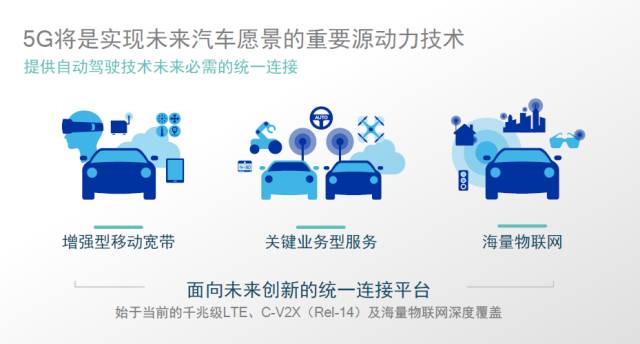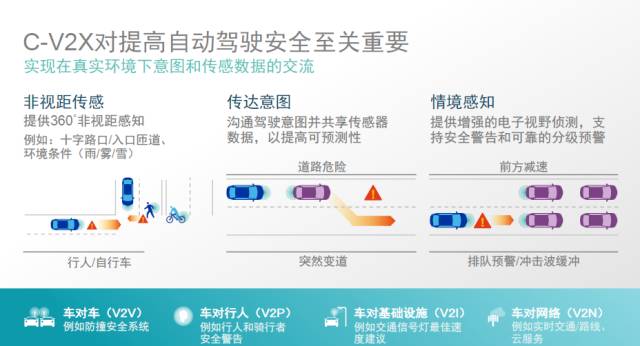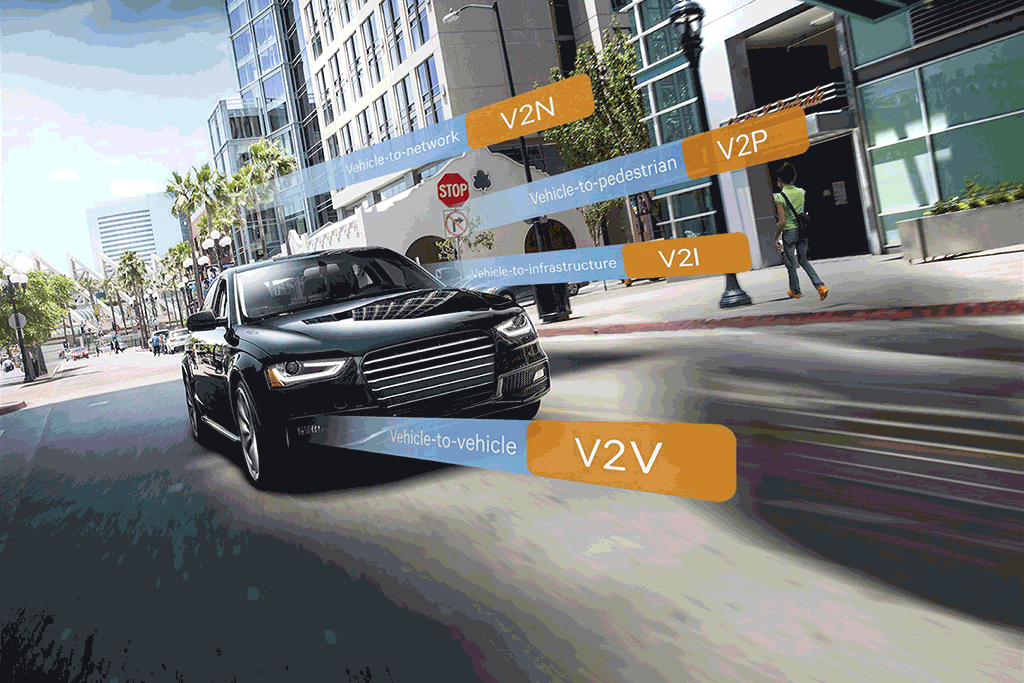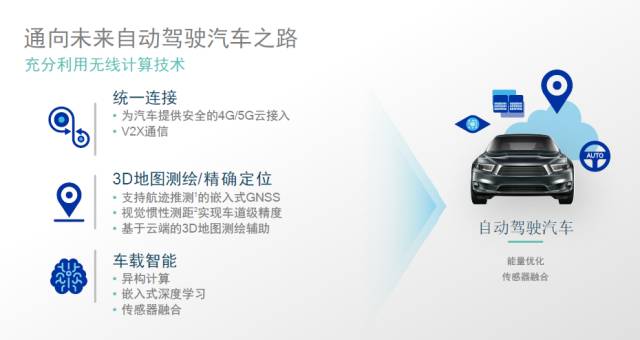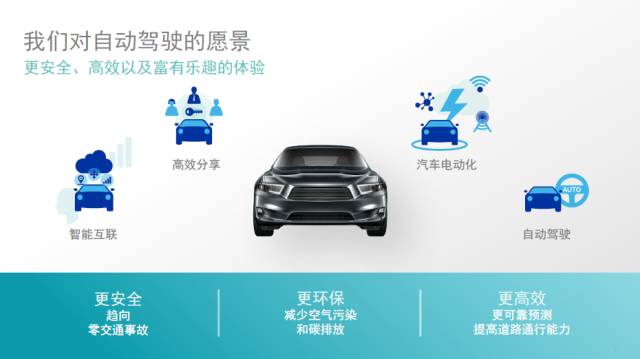Along with the leap forward of technology Everyone's discussion about future driving is getting hotter. Among them, C-V2X (ie cellular car network communication) As one of the key technologies for autonomous driving Will change the way we travel Then, when is C-V2X, when can it be achieved? What is its advantage? What convenience will it bring to our lives? Want to know the answer to these questions - The focus is coming, please look carefully! 1 The C-V2X will be ready for commercial deployment in the car by 2020 C-V2X is gaining widespread support from the ecosystem. In March 2017, 3GPP completed the C-V2X Rel-14 specification. By bringing together different players from different industries, 5GAA has helped define and test C-V2X technology protocols and specifications. Many automakers are conducting C-V2X engineering and field operations testing worldwide: in addition to our performance tests with Ford in the US, there is also the EU ConVeX field test with Audi and the cooperation with the logo Citroen Group in France. Conducted the "Towards 5G" test. 2 C-V2X is a modern technology with superior wireless performance Other V2X technologies have matured a decade ago. Modifications in modulation and coding, better receivers, and overall advancements in LTE-powered technology enable C-V2X to support farther communication distances in denser environments than IEEE 802.11p-based wireless technologies (about 2 times), better non-line of sight (NLOS) performance, enhanced reliability (lower packet error rate), higher capacity and better congestion control. The IEEE 802.11p-based wireless technology is used by dedicated short-range communication (DSRC) and intelligent transportation system G5 (ITS-G5). For today's critical safety use cases and future autonomous driving, the C-V2X's enhanced features deliver outstanding performance in a variety of scenarios, such as road/traffic conditions and speed. 3 C-V2X is the only V2X technology with a clear 5G evolution path Backward/forward compatible The C-V2X Rel-14 has a strong evolution towards the C-V2X based on the 5G new air interface, which will enhance Rel-14 through complementarity and new features while maintaining backward compatibility. The C-V2X evolution will incorporate 5G new air interface features to provide high throughput, wideband carrier support, ultra low latency and high reliability for autonomous driving and advanced use cases such as high throughput sensor sharing, intent sharing and 3D HD map updates. From Rel-14 to C-V2X based on 5G new air interface, the C-V2X technology platform is safer, more robust and more reliable than previous generations. In addition, it can provide a richer differentiation experience. As we enter the world of 5G and autonomous driving, all this will make the car a major use case. 4 C-V2X is more cost effective than other V2X technologies In 2021, most new cars will have embedded cellular connectivity, and in the near future, some car manufacturers will configure cellular modems for almost all of their cars. The C-V2X can be implemented with the cellular modem technology that will be available in the car, allowing automakers to benefit from economies of scale – reducing system complexity and making the C-V2X cost-effective to implement. In addition, by leveraging existing cellular communications (V2N) for network communications, the C-V2X can be combined with roadside unit (RSU) and cellular network capabilities to help improve security and support autonomy (such as providing local and wide-area traffic) Information, as well as real-time map updates). The combination of RSU and cellular infrastructure reduces deployment costs and delivers significant economic benefits. Cellular vendors' experience in deploying, managing, and maintaining complex communication systems not only saves money, but also creates new business models and service opportunities. 5 C-V2X is a security technology with predictable performance 3GPP defines strict minimum performance requirements specifications to ensure a predictable, unified and guaranteed field experience that supports applications as important as road safety. For example, 3GPP defines a minimum requirement for block error rate (BLER) to ensure reliable communication at different channel conditions and speeds of up to 500 km/h. Unlike IEEE 802.11p-based technologies, each C-V2X transceiver/chipset vendor must adhere to these specifications to support predictable and consistent performance in real-world use. 6 C-V2X works on the ITS spectrum to ensure safety and save lives C-V2X defines two complementary communication modes that together support a wide range of use cases. For active safety, C-V2X direct communication supports vehicle-to-vehicle (V2V), vehicle-to-travel (V2P), and vehicle-to-infrastructure (V2I) direct communication using a unified dedicated ITS spectrum. For infotainment and non-delay sensitive information security use cases (such as traffic accidents one kilometer ahead), the C-V2X also supports vehicles communicating with the cloud over the cellular spectrum over mobile networks (vehicle-to-network, V2N). In the globally unified 5.9 GHz ITS band, the C-V2X is able to transmit secure information (such as road hazard warnings) using low-latency direct communication technology, independent of V2N transmitted over commercial cellular spectrum bands supporting in-vehicle and infotainment applications. Communication impact. 7 C-V2X is designed for low-latency direct communication and does not rely on network assistance C-V2X direct communication provides extended communication range and enhanced reliability without relying on cellular network assistance or coverage. It supports real-time secure information exchange for V2V, V2I and V2P without the need for any type of cellular network. 8 C-V2X is designed for high speed vehicle use cases Since its earliest implementation, wireless cellular technology has been designed to support high speeds. Based on fifteen years of vehicle information standardization and deployment, the 3GPP C-V2X R-14 is further enhanced for high-speed vehicle use cases (such as enhanced signal design) to support vehicle use cases with relative speeds of up to 500 km/h under different road conditions. . 9 Without Global Navigation Satellite System (GNSS) C-V2X also stable synchronization The C-V2X has a robust mechanism to support cost-effective synchronization from different sources, even without Global Navigation Satellite System (GNSS). In fact, all V2X technologies rely on GNSS to provide location information that is required to run ITS security applications. In terms of ensuring system reliability, since stable timing avoids multipath errors, it is more important to obtain microsecond timing than to obtain positioning information from GNSS. In addition, tracking timing can be achieved with a single satellite. Many tunnels have sufficient GNSS coverage to support positioning, which allows timing information to be received in both tunnels and underground parking lots. Without GNSS, 3GPP has defined detailed protocols for vehicles using different synchronization sources (other cars, eNodeBs, and RSUs). Currently, hundreds of millions of LTE terminals in use have proven that cellular technology can meet synchronization requirements in a cost-effective manner. 10 C-V2X is designed with safety in mind Secure communication is important for any V2X application. C-V2X benefits from existing security and transport layers and application protocols defined by automotive standards organizations including the International Organization for Standardization (ISO), the European Telecommunications Standards Institute (ETSI), and the Institute of Electrical and Electronics Engineers (IEEE 1609 Working Group). The momentum of C-V2X is still growing, and Qualcomm is always working on it. Just this year, Qualcomm introduced the Qualcomm 9150 C-V2X chipset, a car networking solution that supports direct communication with C-V2X PC5. To meet the mass production needs of automotive manufacturers for road safety with C-V2X solutions, the chipset is expected to be commercially available in the second half of 2018. 6Lan Software Router,6 Ethernet Mini Pc,6 Lan Mini Pc,6Lan Firewall Router Shenzhen Innovative Cloud Computer Co., Ltd , https://www.xcypc.com